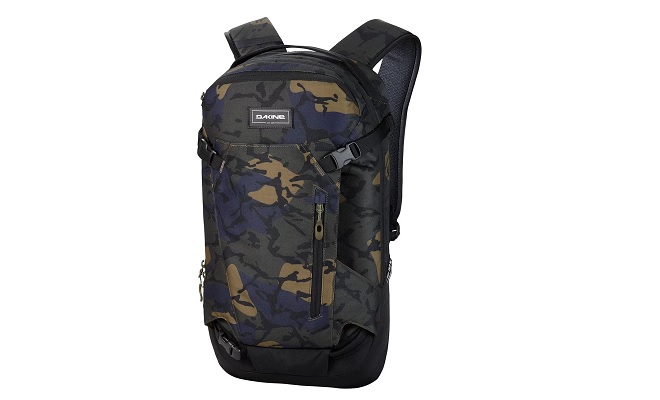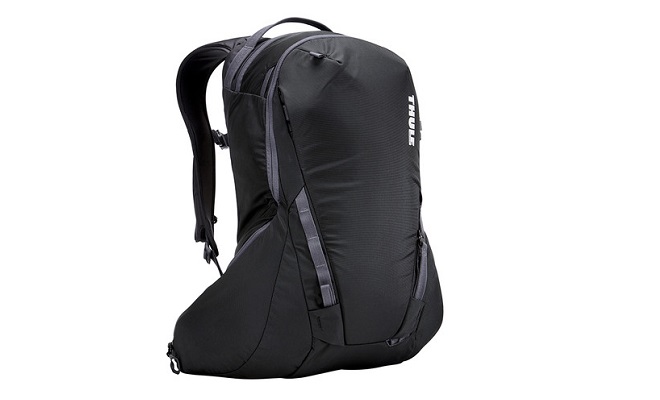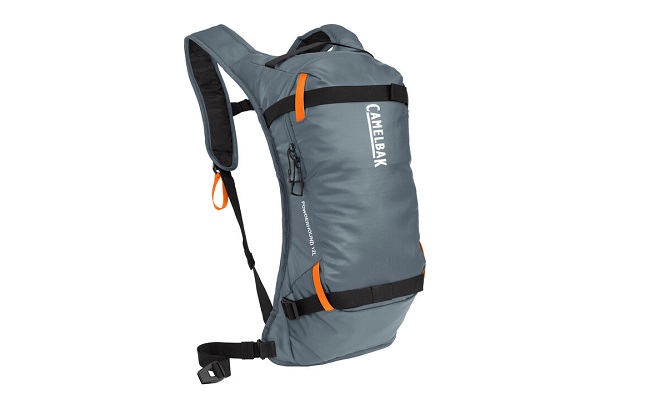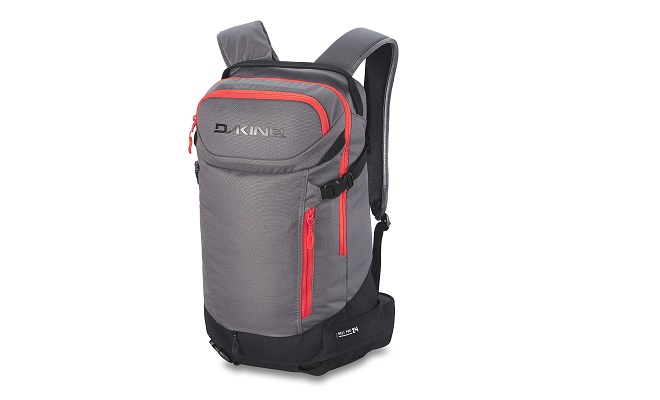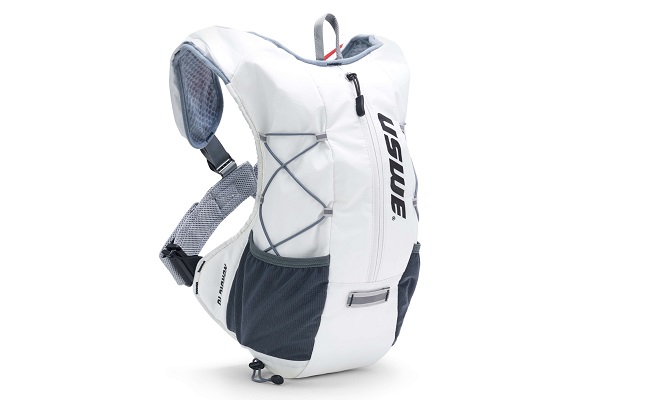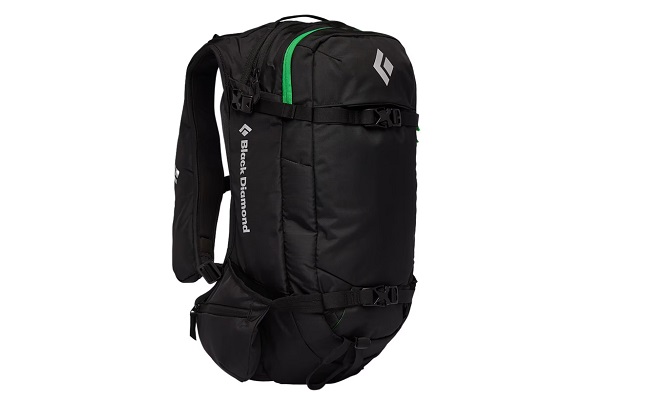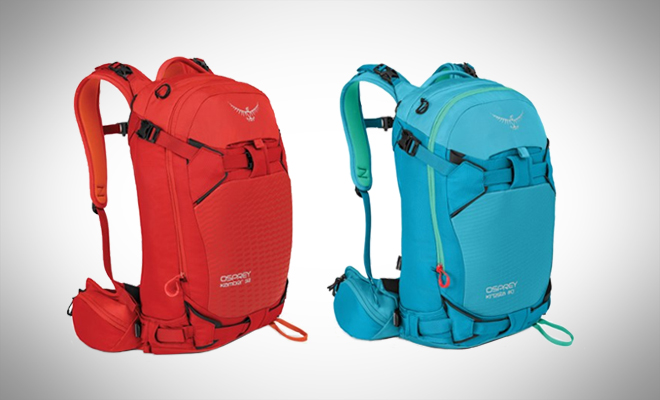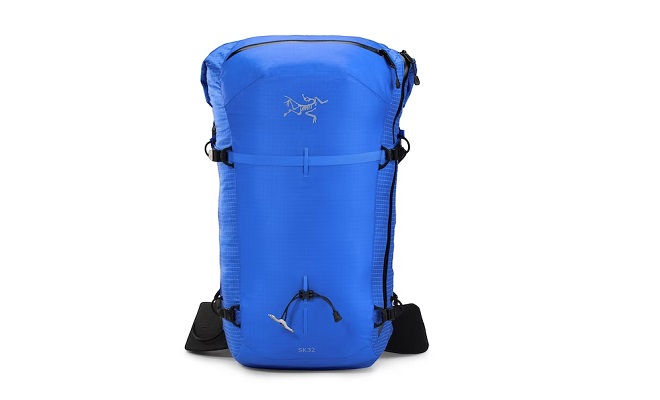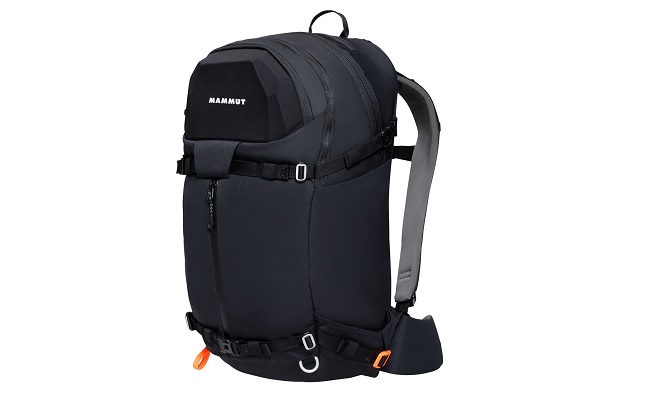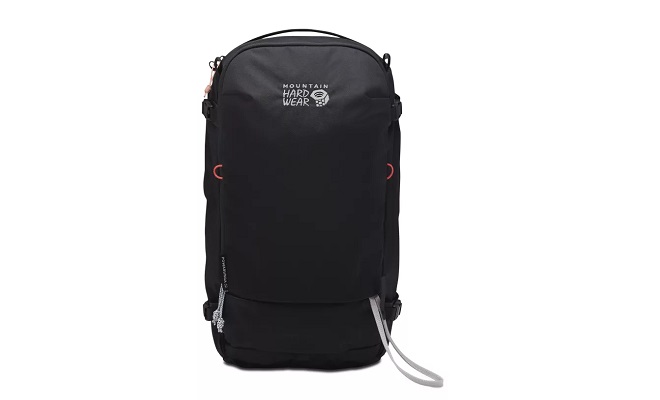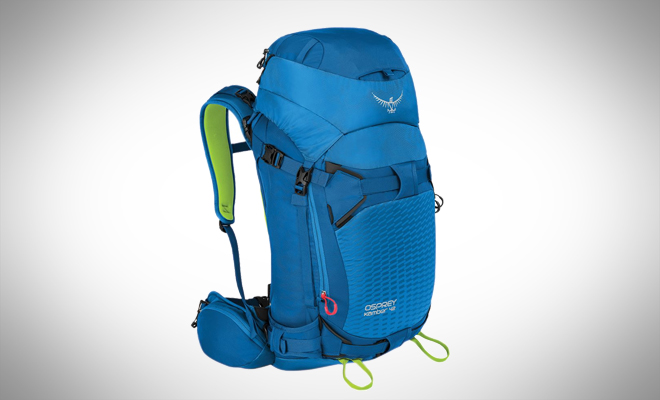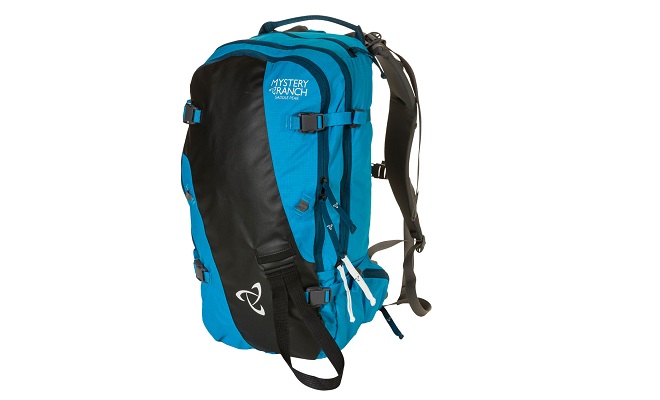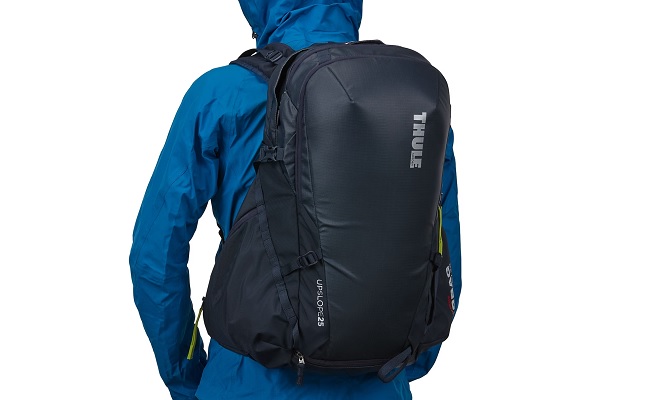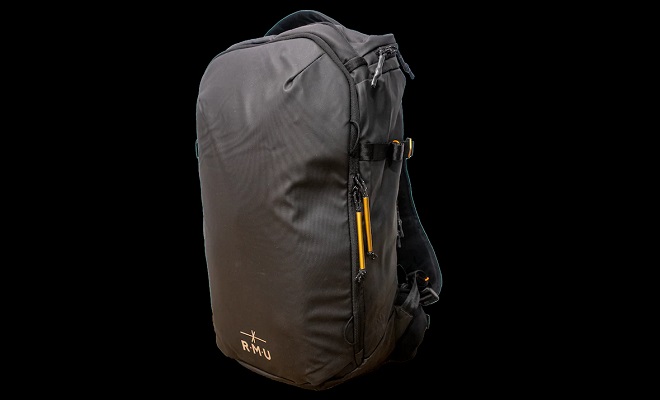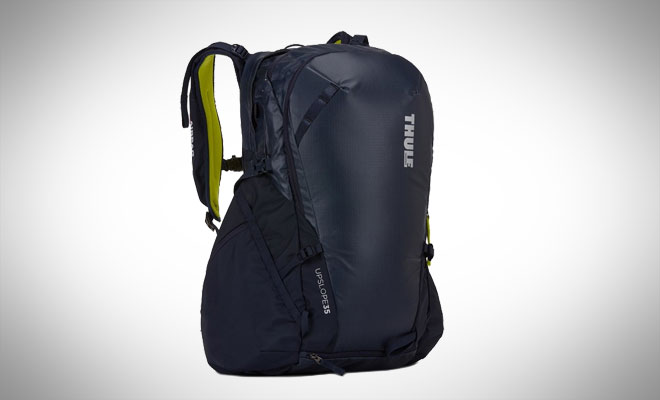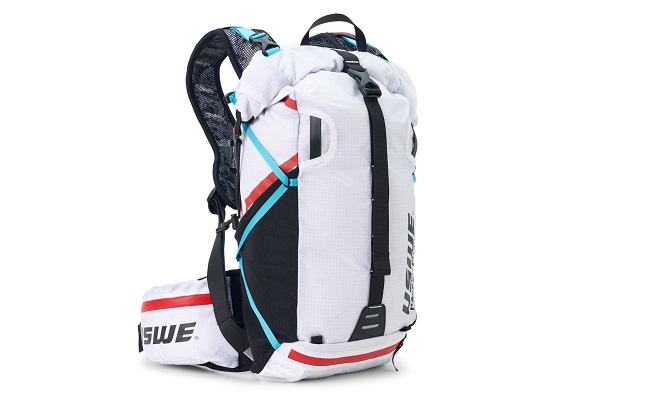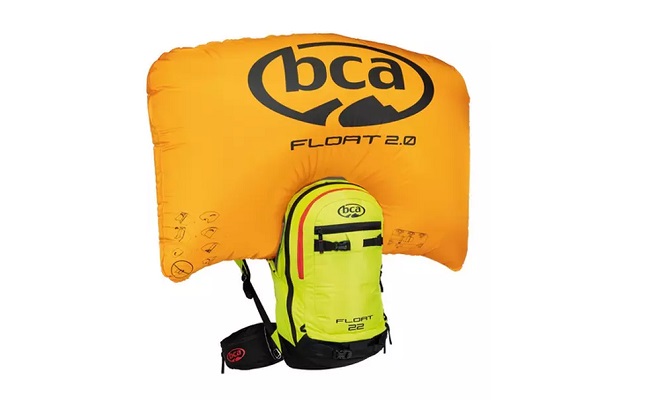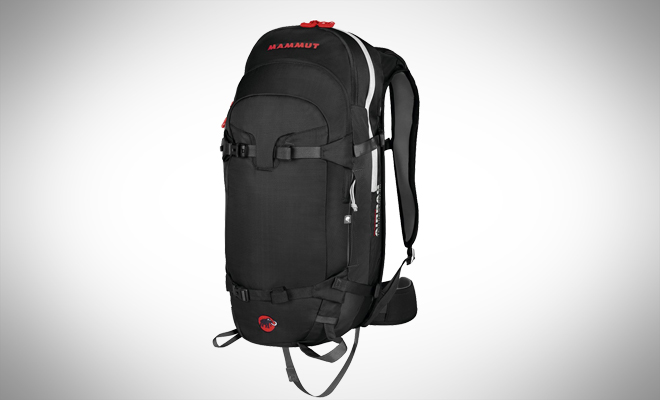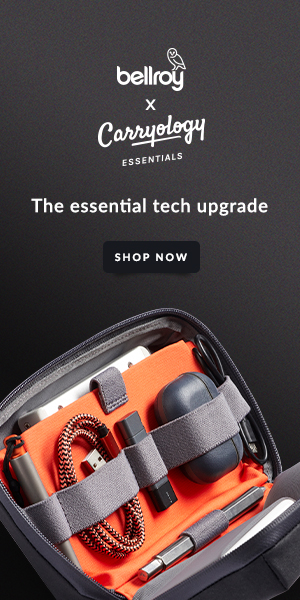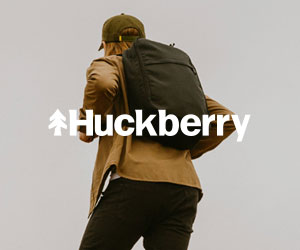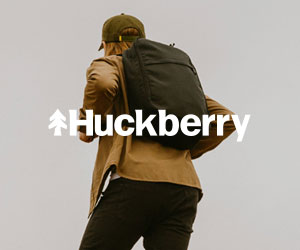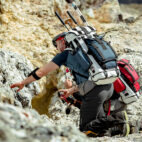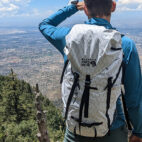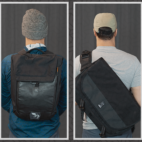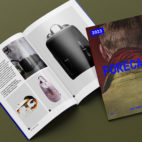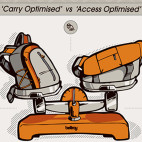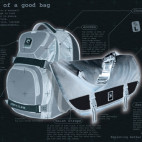The Best Snowboarding and Ski Backpacks of 2023
Updated on March 7th 2023
The snow’s fallen, the conditions are just right, and the slopes are calling. It’s a thing of beauty…and we’re not just talking physically. The freedom, the thrill and the adrenaline-pumping action are hard lures for a snowboarder or skier to resist. But to really make the most of a snow outing you need suitable gear in addition to proper experience and knowledge. A good pack can make the difference between a great adventure and a potentially disastrous one.
So we’ve highlighted some points to consider when choosing your pack, along with some of the best snowboarding and ski backpacks of 2023 to suit your needs and budget.
Size
How long will your trip be? Where will you go? How much gear do you need to carry? Thinking about these questions will help you decide what size of pack is best suited to your needs. For minimalist carry setups and short excursions up to around 20L of pack volume should get the job done. If you need to pack a little extra for longer day trips, consider packs around the 20L to 35L range. Look upwards of this range if you’re planning overnight or hut tours (around 35L to 55L) or multi-day trips with equipment such as a tent and cooking gear (around 60L to 70L).
Fit
If your pack doesn’t fit well it won’t be comfortable for long hours on the slopes. Plus it could potentially reduce your stability and freedom of movement – not a situation you want to be in when trying to stay safe on the snow. Remember, the fit will change once you start filling the bag. So if you can, try the pack on in person and load it up with snow gear before you buy it. Also make sure it suits your torso length (some packs offer adjustable torso lengths). In addition, some packs come in gender-specific options which will suit male and female users respectively.
Safety Gear Storage
In an emergency time is precious. You don’t want to waste it trying to get to hard-to-reach safety gear. Your pack should provide designated storage for snow tools such as a probe and shovel, ideally within their own compartment and easily accessible without having to remove the skis or board. Make sure the gear is stored internally rather than attached externally to the pack (which helps reduce the chances of it being ripped off or lost from snagging, accidents or avalanches). Look for organization pockets too; they’ll help you access safety gear faster and more easily.
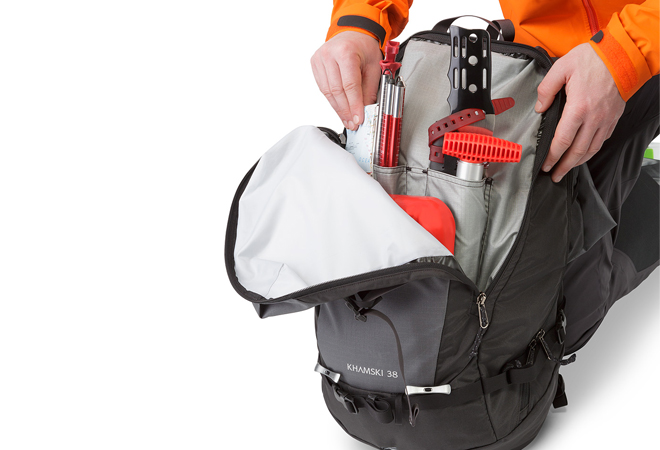
Access
Rummaging for gear is both frustrating and a waste of time, so try to ensure your pack offers convenient access to the contents. Back panel access to the main compartment is handy for reaching gear throughout the compartment, plus it helps to keep snow off the back panel when laying the pack down to get to gear. Ideally look for at least two access options (such as top and back, back and side, etc.) to maximize efficient access to gear throughout the pack.
Key Features
Your pack should cater to your specific needs, which might change depending on different trips. However, there are a few key features that are handy to have for a range of trips. For instance, exterior loops to carry an ice axe, a helmet carry system to keep the helmet secure when not in use, and quick-access storage for goggles. Plus you may find it useful having additional attachment points for extra gear as required. Think about what carry requirements you really need your pack to handle, and choose accordingly.
Durability
Skiing and snowboarding can be tough on your carry gear, so a solid build is key. It doesn’t need to be built like a fortress (remember, the more durable a bag is, the heavier it likely is). But you never know when the bag may scrape past tree branches or unforgiving rock faces. Plus your gear can be hard on your pack too. So it should at least offer abrasion-resistant fabric in areas of high wear, such as the bottom of the pack or where the sharp edges of snow safety gear, skis or a snowboard may connect with the fabric. Also think about reinforced seams and stitching in high-stress areas if you’re going to be making big demands of your gear and/or hauling heavy loads.
Weatherproofness
You’re going to be in wet and snowy conditions. So it makes sense your gear should have at least some degree of water resistance. Consider features such as water-resistant coatings, a back panel designed to shed snow, water-resistant zippers, sealed seams, and storm flaps over zippers. The degree of weatherproofness you need will be trip, gear and environment-specific. In general (but not always) expect to pay a little extra the more weatherproof a pack is. However, if you’re on a budget you can pick up some inexpensive dry bags (or even trash bags) to provide extra protection for important items such as clothing and electronics that you don’t want to get wet.
Ski and Snowboard Carry
Different packs will carry skis and boards in different ways. For instance, some may offer vertical or horizontal board carry, diagonal or A-frame ski carry, or a mixture of options. Ideally look for a pack that gives you more options rather than less, as this will give you greater carry flexibility in a range of environments. For example A-frame carry can keep the load more stable but will be a hindrance in areas with low-hanging branches or rocks. If you can, try to get the attachment strap measurements before buying the pack so you can check they’ll accommodate your skis or board.
Hydration Bladder Compatibility
Having a pack with hydration bladder compatibility means easy access to water without having to slow down or remove the pack. Ideally the bag should offer insulated routing along the shoulder strap for the hose, with designated storage for the bladder and an exit port for the tube.
Suspension System
A good suspension system will help keep you comfortable on the go, enhance load stability, and assist with carrying heavier loads. Look for elements such as a comfortable and adjustable sternum strap and waist belt, a suitably rigid frame to suit the load, and comfortable padding in the straps and waist belt. Compression straps also help bring the load closer to your body for better stability and comfort.
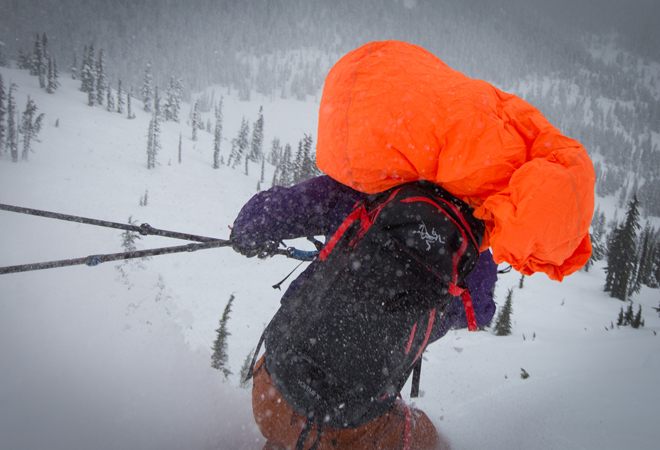
Airbags
It’s important to note that backpacks with airbags won’t guarantee you will survive an avalanche or won’t get injured. However, they can greatly reduce the chances of injuries (particularly to the head and neck), as well as offering the added bonus of keeping you as close to the snow’s surface as possible. This will make the rescue process easier and faster, thereby boosting your survival chances. There is of course no requirement to get a pack with an avalanche airbag, and they will be heavier and more expensive than snow packs without an airbag system. However, it’s worth considering getting such a pack in areas that are prone to avalanches (plus it can boost your peace of mind). Remember it’s important to be aware of and implement appropriate snow safety knowledge at all times, and to know how to use avalanche safety gear appropriately. A variety of avalanche and snow safety courses are available to help keep you and your trip companions safe and prepared on the slopes.
Our Selections
Osprey Glade 12 (US$77.50)
The Osprey Glade 12 demonstrates that functional snow packs don’t need to break the bank. The hydration bladder compatible pack offers a slim profile for carrying the essentials without unnecessary bulk and enabling easy chair lift rides. It offers quick-access storage for smaller items, is made with water-resistant bluesign® approved recycled materials, and provides vertical and horizontal snowboard carry and diagonal ski carry.
Pros:
– Great value for money
– Sustainable bluesign® approved recycled materials
– Vertical/horizontal board carry and diagonal ski carry
– Hydration bladder compatible
Cons:
– Compact volume won’t suit those needing to carry larger loads
– Basic stabilizing hip belt doesn’t provide much comfort
Osprey Soelden 22 (US$92.50)
The Osprey Soelden 22 is a lightweight, durable pack designed for active backcountry use. The suspension enables dynamic movement while keeping the load comfy and stable. The pack provides easy front access to snow tools, while full panel back access provides easy packing and gear retrieval. There’s also a quick-access top pocket for goggles and other small items. The pack enables vertical board carry and both diagonal and A-frame ski carry. And if you want a women-specific fit, check out the Sopris 20.
Pros:
– Vertical board carry and diagonal/A-frame ski carry
– Quick access to snow tools and goggles
– Good value for money
Cons:
– Basic webbing hip belt doesn’t offer much comfort
Mammut Aenergy ST 20-25 (US$95)
The Mammut Aenergy ST 20-25 takes inspiration from trail running vests to keep the load close to the body and bounce-free on the move. The roll-top closure provides flexible volume, while rear access lets you easily pack and reach items in the main compartment. The pack’s front pocket offers dedicated storage for snow tools, while additional gear loops and daisy chain provide added carrying options for larger items. Added bonus? You can snag it at a great price too.
Pros:
– Lightweight build and trail running inspired harness helps keep you moving agilely
– Dedicated storage for snow tools
– Rear access for easy packing and gear retrieval in the main compartment
– Good value for money
Cons:
– Could benefit from additional quick-access pockets for smaller items
– Relatively small capacity may not suit those needing to carry large loads
Burton [ak] Dispatcher 18L Backpack (US$96.99)
The Burton [ak] Dispatcher 18L Backpack is designed to provide everything you need for a day on the slopes, with nothing you don’t. The pack is hydration bladder compatible and offers dedicated storage for snow tools and goggles. You also benefit from quick-access hip belt pockets and a clean, comfy design. The pack is made with sustainable bluesign® materials and backed by a lifetime warranty too.
Pros:
– Hydration bladder compatible
– Dedicated storage for snow tools and goggles
– Good value for money
Cons:
– May not suit those seeking to carry larger loads
Dakine Heli 12L Backpack (US$99.95)
The Dakine Heli 12L backpack is designed for carrying the essentials, and features exterior storage for a shovel along with vertical board carry and diagonal ski carry options. The interior includes a fleece-lined goggle pocket and a hydration bladder sleeve that can also double as a laptop sleeve.
Pros:
– Versatile design can alternate between days on the slopes and EDC use
– Good value for money
– Quick-access shovel storage
Cons:
– Size may be too compact for some users
– Basic hip belt
– Lack of many quick-access pockets for snacks and other small items
Thule Upslope 20L (~US$103)
The updated Thule Upslope 20L offers great access thanks to a zipper that coils round the entire pack, letting you get to gear in the main compartment without having to take the pack off. The pack carries skis diagonally and a snowboard vertically, with stowable straps to prevent snagging. An insulated hydration sleeve helps prevent the hose freezing, and interior compression keeps your gear secure and stable on the move. Plus with side pockets that wrap round your body, this pack will carry comfortably and stably when you’re on the move.
Pros:
– Carries both snowboards and skis, with an adjustable loop to suit different widths
– Access the main compartment without having to take the pack off
– Insulated hydration sleeve to help stop the hose freezing
– Quick-access side pocket and protective goggle pocket
– Interior compression to help keep the load stable
Cons:
– Exterior lash point for helmet carry but won’t prevent it moving around on the go
CamelBak Powderhound 12 (US$110)
The CamelBak Powderhound 12 is a solid option for days on the slope with essential gear in tow. The pack offers 10L of gear capacity and additional space for an included 2L Crux Reservoir. The pack carries a snowboard and also offers A-frame or diagonal ski carry. The Lift Access QR harness makes it easy to access gear while you’re on the chair lift, while the SnowShield™ material keeps snow from sticking to your pack.
Pros:
– Insulated tube storage for the hydration bladder
– A-frame and diagonal ski carry plus snowboard carry
Cons:
– Compact volume doesn’t offer much flexibility for days when you need to carry larger loads
– Basic hip belt doesn’t provide much comfort
Dakine Heli Pro 24L (US$140)
The Heli Pro 24L backpack (also available in a women’s version) offers a choice of vertical snowboard carry and diagonal and A-frame ski carry. A snow tool pocket, fleece-lined goggle pocket, and quick-access pocket keep essentials within easy reach, while back panel access provides handy access to the main compartment. The pack also offers stowable helmet carry and an insulated hydration sleeve.
Pros:
– Choice of ski and board carry options
– Fleece-lined goggle pocket
– Helmet carry
– Quick-access snow tool pocket
Cons:
– Fairly basic hip belt with no quick-access pockets
– More weatherproof options available
USWE NORDIC 10L Hydration Pack (US$149.99)
The USWE NORDIC 10L Hydration Pack is a versatile bag that works well for cross-country skiing but also running and mountain biking. It offers a 10-liter capacity in total, including a 2.0L hydration bladder, and comes with Thermo Cell insulation technology to prevent the drink tube and bite valve from freezing even in extreme conditions. And the No Dancing Monkey™ 1.1 four-point suspension harness provides bounce-free carry so you can hit the slopes in comfort.
Pros:
– Tough construction
– Comfortable four-point suspension harness
– Hydration bladder compatible with Thermo Cell insulation technology
– Versatile design lends itself to multiple activities
Cons:
– Small volume won’t suit those needing to carry larger loads
Black Diamond Dawn Patrol 25L Backpack (US$179.95)
The 25L Dawn Patrol is ready to roam the backcountry on day trips with medium loads, offering useful features such as front pocket storage for snow tools, rear back panel entry for easy access to the main compartment, and insulated hydration bladder compatibility. The pack features 100% recycled main body fabrics, dual hip belt pockets, and a choice of diagonal/A-frame ski carry and vertical snowboard carry.
Pros:
– Rear panel access to main compartment
– Dual hip belt pockets for smaller items
– Front quick-access storage for snow tools
– Hydration bladder compatible
Cons:
– Waist belt buckle can be fiddly with gloves on
Osprey Kamber 32 and Kresta 30 (~US$180-$210)
Osprey’s Kamber 32 and Kresta 30, designed for men and women respectively, combine functional features with comfortable design for a day in the backcountry. Both packs offer diagonal and side ski carry as well as vertical and horizontal board carry. Designated storage for snow tools and a quick-access goggles pocket help keep your gear tidy, and the main compartment is easily accessed through the back panel. The packs are also compatible with hydration bladders and include insulated hose routing on the shoulder strap. In addition, handy hipbelt pockets keep small essentials and snacks within easy reach.
Pros:
– Multiple ski and board carry options
– Helmet carry
– Quick-access hipbelt pockets
– Men and women-specific models
– Hydration bladder compatibility
– Glove-friendly zipper pulls
Cons:
– Access to the goggles pocket is blocked when carrying a helmet
– Having to unclip buckles on the shoulder straps for back panel access may annoy some users
Arc’teryx Rush SK 32 (~US$185)
Arc’teryx’s Rush SK 32 is honed for the backcountry, with a clean silhouette to reduce potential snagging and a water-resistant build featuring a weather-resistant exterior, WaterTight™ zippers, and taped critical seams. The roll-top main compartment provides flexible storage for changing loads, while quick-access pockets keep smaller items close at hand.
Pros:
– Diagonal and A-frame ski carry and vertical snowboard carry
– External helmet carry
– Flexible roll-top volume
Cons:
– Lacks hydration bladder storage
Mammut Nirvana 35L Backpack (US$199.95)
The Mammut Nirvana 35L is a great pick when you need to pack for a long day out in the backcountry. The main compartment can be accessed through the rear panel, while the front pocket provides dedicated quick access to snow tools. You’ll also find molded protective storage for goggles, as well as hydration bladder compatibility. The pack accommodates board carry as well as diagonal and A-frame ski carry, and if you want to trim the load, the hip belt is removable too.
Pros:
– Molded goggles storage
– Comfortable harness
– Compatible with a hydration bladder
– Snowboard carry and diagonal/A-frame ski carry
– Removable padded hip belt
– Quick-access snow tool storage
Cons:
– Could benefit from an additional hip belt pocket for smaller items
– Getting on the pricier end of packs
Mountain Hardwear Powabunga 32 (US$200)
The Mountain Hardwear Powabunga 32 packs a punch with its feature-rich and functional design. A pivoting hip belt and ergonomic suspension keep the weight distributed evenly and efficiently, allowing the pack to move with you while you’re on the go. Access has also been well considered, with quick-access front storage for tools and goggles and full back panel access to the main compartment. The pack supports both A-frame and diagonal ski carry and is hydration bladder compatible too.
Pros:
– Supports A-frame and diagonal ski carry
– Pivoting hip belt for efficient load carry
– Insulated hydration tube routing in the shoulder strap
– Quick access to tools and goggles
Cons:
– On the pricier end of ski packs
Osprey Kamber 42 (~US$213)
Like the features of the Osprey Kamber 32 but want more space? The Osprey Kamber 42 delivers, sharing the same ski and board carry options, a front pocket for snow tools, hydration bladder compatibility, helmet carry and a pocket for goggles. However, the pack also includes a removable lid so you have the option for additional storage if needed or a means to shed excess weight and travel lighter. In addition, dual access through the top or back panel makes getting to your gear convenient and quick. The pack comes in a S/M size (40L) and M/L (42L) to suit different loads and users.
Pros:
– Multiple ski and board carry options
– Removable lid lets you lighten the load or utilize extra storage capacity as required
– Rope can be carried under the lid
– Quick-access hipbelt pockets
– Hydration bladder compatible
Cons:
– Leaning towards the pricier end of ski/snow packs
– Helmet holder can be difficult to unhook
Mystery Ranch Saddle Peak Pack (US$219)
The updated 25L Saddle Peak is aimed at day-long ski touring adventures, with Mystery Ranch’s signature burly functionality well on display. The external reinforcement panel with 840d nylon and a tough Carbonite coating pairs with upgraded 320d NP Phantom Ripstop fabric with a wax coating, helping the pack tackle demanding use while shedding snow and water. The pack offers quick access to snow tools and goggles and is also hydration bladder compatible. The pack accommodates vertical board carry and diagonal and A-frame ski carry and also offers an adjustable torso length to suit different users.
Pros:
– Tough build for demanding use
– Adjustable harness suits different torso lengths
– Quick access to snow tools and goggles
– A-frame and diagonal ski carry and vertical board carry
– Stowable helmet carry
Cons:
– Not budget-friendly
Thule Upslope 25L (US$239.95)
The Thule Upslope 25L offers a practical pack for skiing and snowboarding, with the flexibility to accommodate a Mammut Removable Airbag 3.0 if desired (note the airbag is not included). The wrap-around side pockets provide load stability as well as quick-access storage, while a front pocket provides dedicated storage for snow tools. The pack provides diagonal ski carry and vertical snowboard carry, along with an insulated sleeve for hydration bladder compatibility.
Pros:
– Space to accommodate a Mammut Removable Airbag 3.0
– Roomy quick-access side waist pockets
– Diagonal ski carry and vertical board carry options
– Quick-access snow tool storage
– Stowable helmet carry
Cons:
– Not budget-friendly
– Could benefit from a top pocket for storing smaller items
RMU Core Pack 25L (US$249)
The RMU Core Pack offers a sleek blend of snag-free styling and tough construction, featuring a weatherproof and abrasion-resistant 420D nylon exterior. The pack uses recycled nylon and a recycled polyester lining and is backed by a lifetime warranty. To get to gear, the pack features full back panel access, quick access to snow tools and goggles, as well as separate storage for wet items. And with hydration bladder compatibility, you can stay easily hydrated on the move.
Pros:
– Tough, highly weather-resistant build
– Quick access to snow tools and goggles
– A-frame and diagonal ski carry options
– Insulated shoulder strap hydration tube storage
Cons:
– Expensive
Thule Upslope 35L (US$ 279.95)
Thule delivers sleek functionality and flexibility with the Upslope 35L backpack. Back panel access lets you get to gear throughout the bag while keeping snow off the back panel. There’s also a dedicated front compartment for storing snow safety gear away from dry items. Additionally, the backpack can be used with the Mammut Removable Airbag 3.0 system (sold separately) for enhanced safety on the slopes.
Pros:
– Can be used with the Mammut Removable Airbag 3.0 system
– Large side pockets keep quick-access items at the ready
– Carries skis diagonally and snowboards vertically
– Insulated hydration sleeve prevents hose freezing
– Top pocket for goggles
– Helmet can be stored on the front or bottom of the pack
Cons:
– Expensive
USWE HAJKER Pro 24L (US$279.99)
If you’re after toughness with bounce-free comfort, look to the USWE HAJKER Pro, which features their four-point No Dancing Monkey™ 2.1 harness system and waist support belt for all-day comfort. The pack offers flexible volume and protection from the elements with a roll-top opening, plus a removable waterproof dry bag, so you can keep your valuable essentials safe and dry on the move. For a nifty extra feature, the waist belt can be used on its own, providing a compact carry option for minimal loads and activities such as short mountain biking rides.
Pros:
– Secure, bounce-free four-point suspension harness
– Removable dry bag and roll-top opening provide protection from the elements
– Waist belt doubles as a standalone hip pack
– Adaptable to various activities such as skiing and mountain biking
– Hydration bladder compatible
Cons:
– Expensive
Backcountry Access Float 22 Avalanche Airbag 2.0 (US$549.95)
You never know when an avalanche may strike. But the Backcountry Access Float 22 Avalanche Airbag 2.0 is great for that extra peace of mind when you’re on the slopes. The functional and safety-centered design incorporates a deployable 150-liter airbag that helps protect your head and neck in the event of an avalanche and also reduces snow burial depth. The pack is comfortable to wear and offers good freedom of movement. In addition, there’s dedicated storage for snow tools, as well as helmet carry, diagonal ski carry, and a quick-access waist belt pocket.
Pros:
– Deployable airbag to help protect you during an avalanche and decrease snow burial depth
– Designated snow tool storage
– Easy-access waist belt pocket
– Helmet carry
– Lightweight for an airbag pack
Cons:
– Float 2.0 air cylinder has to be purchased separately
– Expensive (but still one of the cheaper airbag options on the market)
– Better options available for shorter or narrow-shouldered users
Mammut Pro Protection Airbag 3.0 Backpack (US$ 799.95)
Mammut’s Pro Protection Airbag 3.0 combines a solid, water-resistant build with avalanche safety and convenient organization. The pack’s airbag deploys around the head, neck and chest area to help protect against injuries, with a safety leg loop for added security. As a bonus the airbag system can be removed to utilize the pack for other functions, and can also be used in other compatible bags. The bag has an adjustable back length for a customized fit and features board carry and diagonal ski carry. The main compartment is conveniently accessed through the back panel and a front pocket keeps snow tools in order. A pocket and gear loop on the hip belt provide further organization, and if the hipbelt isn’t required it can be removed to shed weight.
Pros:
– Airbag protection during an avalanche
– Helmet carry
– Padded pouch for goggles
– Hydration bladder compatible
– Adjustable back length
Cons:
– Expensive
– Requires separate purchase of air canister
– Limited ski carry





 Carry Awards
Carry Awards Insights
Insights Liking
Liking Projects
Projects Interviews
Interviews
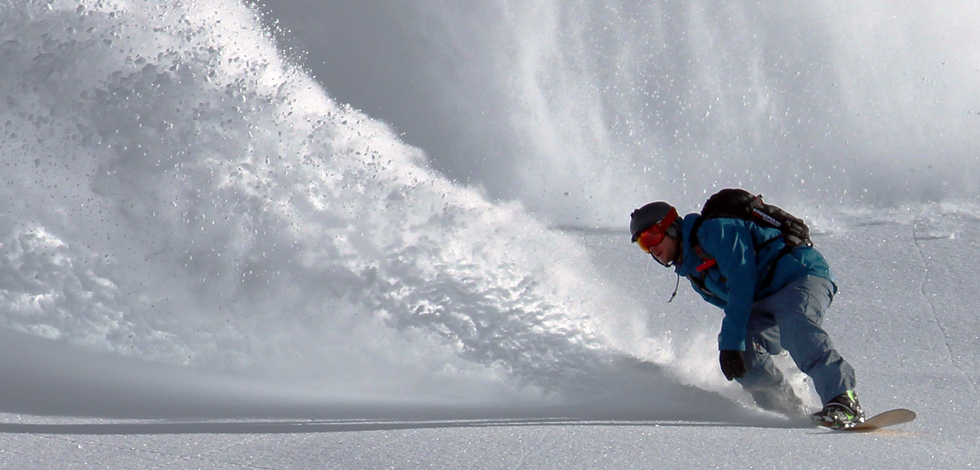
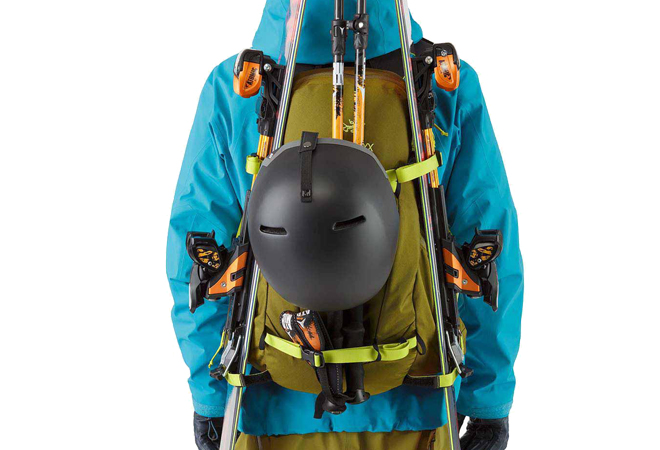
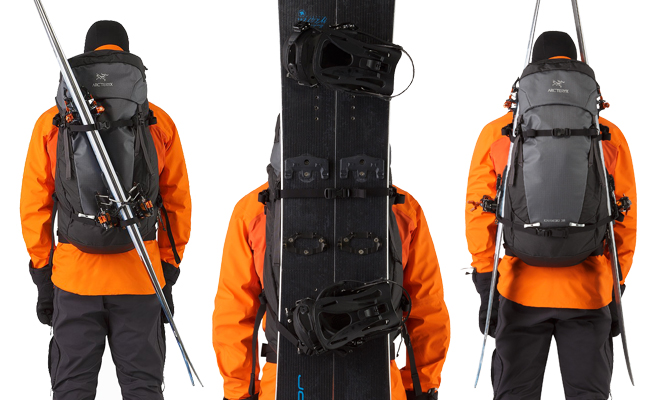
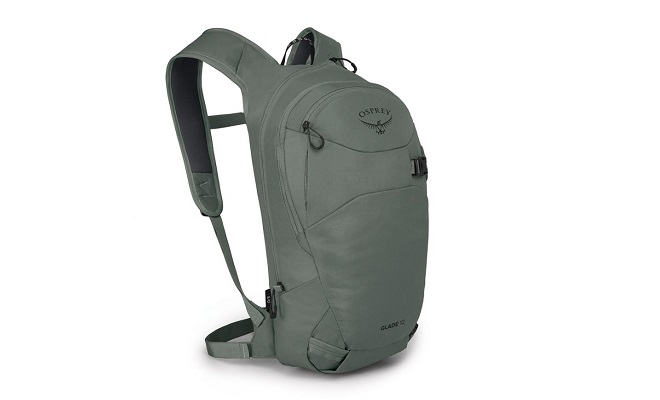
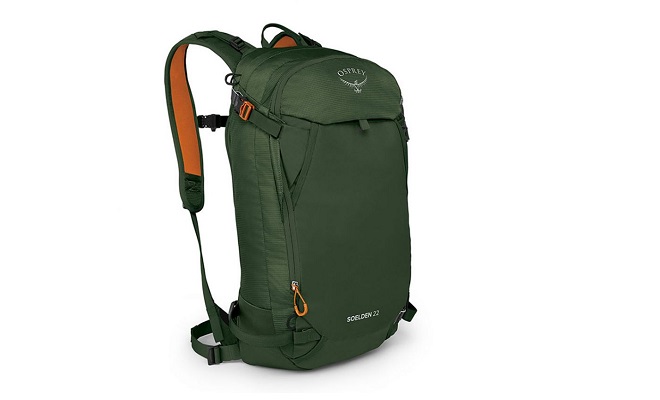
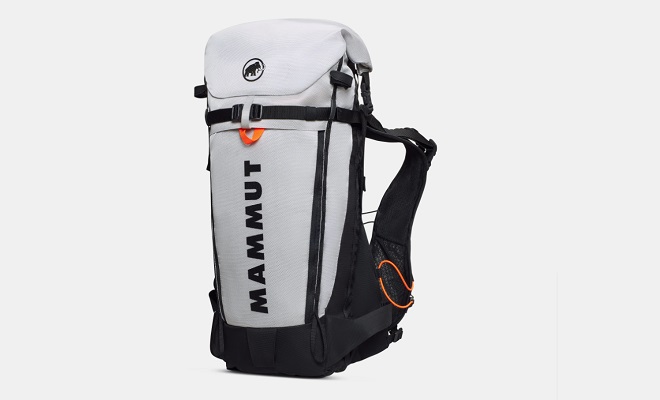
![Burton [ak] Dispatcher 18L Backpack](https://www.carryology.com/wp-content/uploads/2017/08/Burton-ak-Dispatcher-18L-Backpack.jpg)
